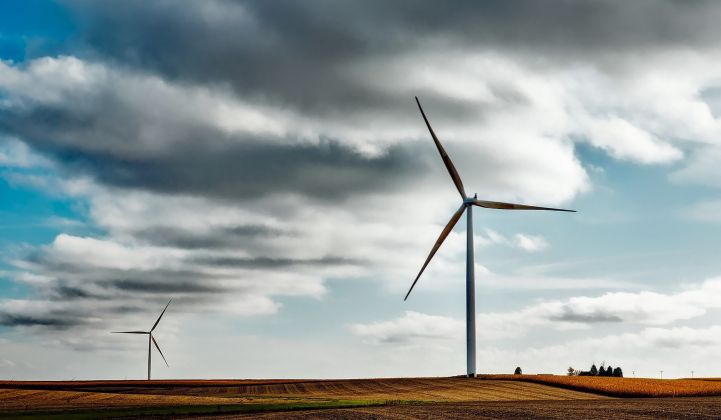Onshore wind is running out of ways to stay ahead of solar energy on cost, according to Wood Mackenzie.
Wind turbine makers and project developers will continue to introduce new technologies and cut costs, but “constraints on technology innovation are on the horizon,” at least for onshore wind farms, WoodMac said Wednesday, highlighting key trends for the industry.
Those constraints might not be such a problem for the wind business, with onshore wind already the cheapest option for new power generation in many parts of the world. But large-scale solar plants are increasingly competitive with onshore wind even in markets like Texas, where wind has long dominated. And solar technology likely has significantly more room to achieve cost reductions.
Add to that the fact that solar pairs more naturally with grid-scale batteries in many instances, and the wind industry has good reason to be nervous about its competitive position against solar in a growing number of markets.
“Solar power has emerged as the biggest threat to onshore wind’s dominance in the decarbonization battle,” according to WoodMac.
As the onshore wind turbine manufacturing sector closes in on full commercial and technological maturity in the 2020s, the industry is in the midst of a "final wave of consolidation," said Dan Shreve, WoodMac’s head of global wind research. “In some ways, the wind energy market is beginning to resemble the natural-gas [combined-cycle gas turbine] market,” Shreve said.
Many once-leading turbine makers have already folded (Senvion) or been absorbed into larger players (Gamesa), or now face a challenging future (Enercon).
“The passing of industry pioneers is bittersweet, though likely a necessity to yield the next round of cost reductions for global wind,” Shreve said.
“If regional giants fall prey to global corporations, it is feasible that 98 percent of the Western wind market will fall under the control of three companies,” namely Vestas, Siemens Gamesa and General Electric.
From a merger and acquisition standpoint, Germany’s Nordex group “will likely come back into play once the U.S. market comes back down to earth in 2023, which will add an additional strain on Western turbine [manufacturers that] are locked out of a booming Chinese market,” Shreve said.
Reaching maturity, however, does not mean that the wind industry is set for decline. WoodMac predicts more than 700 gigawatts of wind capacity will be built globally in the period 2019-2028, with the annual market hovering around 60 gigawatts.
A growing portion of that will come offshore, a sector with much further scope for continued cost declines and potentially fewer constraints when it comes to building transmission infrastructure, WoodMac forecasts.
***
Join Wood Mackenzie's upcoming wind webinar, Winds of change in onshore wind O&M - a look into 2020s, on February 20th, at 11:00am GMT.
Wood Mackenzie has released a free research insight focused on onshore & offshore wind trends and forecasts for the coming decade.




